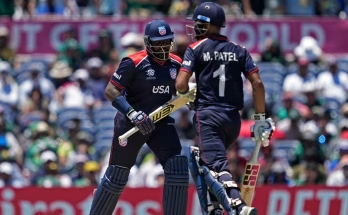Hockey, a sport traditionally associated with frozen Canadian ponds and European ice rinks, has established a firm foothold in the United States over the past century. While it might not hold the same cultural dominance as football, basketball, or baseball, hockey has developed a passionate and growing fan base across the nation. Its evolution in the U.S. is a fascinating tale of innovation, resilience, and cultural adaptation.
Early Days of Hockey in the U.S.
Hockey’s journey in the United States began in the late 19th and early 20th centuries, with the sport spreading from Canada. The first organized game in the U.S. reportedly took place in 1893 at St. Paul’s School in Concord, New Hampshire. From there, hockey found a home in northern states such as Minnesota, Michigan, and Massachusetts, where cold climates allowed for outdoor play.
The establishment of the National Hockey League (NHL) in 1917, initially with teams only in Canada, marked a turning point. By 1924, the league expanded into the U.S. with the Boston Bruins, the first American franchise. Other teams soon followed, including the Chicago Blackhawks, Detroit Red Wings, and New York Rangers, forming what became known as the “Original Six.”
Growth and Challenges
Hockey’s growth in the U.S. faced several challenges, including competition from more established sports, a lack of accessible facilities in warmer regions, and the economic strains of the Great Depression and World War II. However, the sport persevered, buoyed by passionate fans and the commitment of players and organizations.
The 1960s and 1970s saw significant growth, driven by the NHL’s expansion into markets beyond the traditional northern strongholds. Teams like the Los Angeles Kings, Dallas Stars (originally the Minnesota North Stars), and Florida Panthers helped bring hockey to regions where ice sports were far from the norm. Additionally, the rise of televised games introduced the sport to millions of new viewers.
The Miracle on Ice
One of the most defining moments for hockey in the United States came during the 1980 Winter Olympics in Lake Placid, New York. The “Miracle on Ice,” where the underdog U.S. team defeated the heavily favored Soviet Union team en route to a gold medal, captured the nation’s imagination. This victory not only boosted the sport’s popularity but also demonstrated the potential of American players on the global stage.
Hockey’s Modern Expansion
In the modern era, hockey in the U.S. has seen unprecedented growth. The NHL has expanded to include 32 teams, with franchises like the Vegas Golden Knights and Seattle Kraken representing a new era of inclusivity and innovation. Sun Belt teams, such as the Tampa Bay Lightning and Arizona Coyotes, have shown that hockey can thrive in non-traditional markets, thanks to air-conditioned arenas and strong community engagement.
Youth hockey has also surged in popularity, with programs in states like California, Texas, and Florida producing NHL-caliber talent. Players like Auston Matthews, a native of Arizona and one of the league’s top stars, exemplify the sport’s nationwide reach.
The Role of Diversity and Inclusion
Efforts to make hockey more accessible and inclusive have gained momentum. Initiatives such as the NHL’s “Hockey is for Everyone” campaign aim to break down barriers and encourage participation among underrepresented groups. Women’s hockey, too, has made strides, with U.S. players dominating international competitions and inspiring a new generation of athletes.
Economic and Cultural Impact
Hockey contributes significantly to local economies, particularly in cities with NHL franchises. Beyond ticket sales, the sport generates revenue through merchandise, broadcasting rights, and sponsorships. Major events like the Winter Classic and the Stanley Cup Finals attract millions of viewers and bring communities together.
Culturally, hockey has carved out a unique space in American sports. The Stanley Cup, one of the oldest and most prestigious trophies in professional sports, symbolizes excellence and perseverance. Iconic moments, such as Wayne Gretzky’s trade to the Los Angeles Kings, have left indelible marks on American sports history.
Challenges Ahead
Despite its successes, hockey in the U.S. faces ongoing challenges. The high cost of participation, including equipment and rink fees, can be prohibitive for many families. Additionally, the sport must continue to address issues of diversity, equity, and inclusion to ensure its growth reflects the nation’s demographics.
Climate change also poses a unique threat, as rising temperatures make outdoor ice less viable in some areas. This underscores the importance of sustainable practices within the sport’s infrastructure.
Conclusion
Hockey in the United States has come a long way from its humble beginnings on frozen ponds. Today, it is a dynamic and thriving sport with deep roots in tradition and a forward-looking approach to growth and inclusivity. As the NHL continues to expand and youth programs flourish, hockey’s future in the U.S. looks brighter than ever. Whether played on professional ice or in neighborhood rinks, hockey embodies the spirit of teamwork, resilience, and passion that resonates with Americans from all walks of life.




